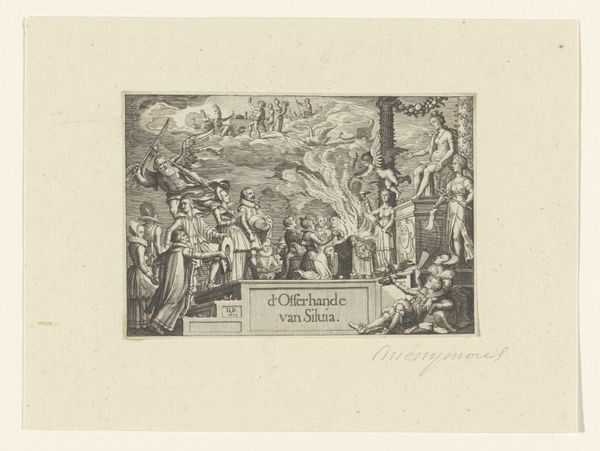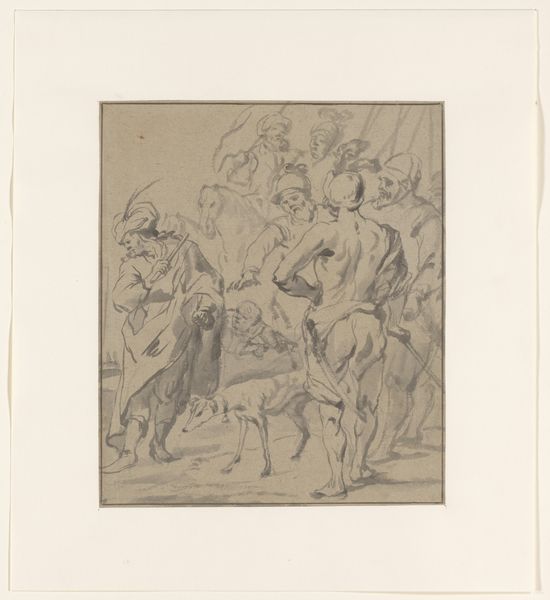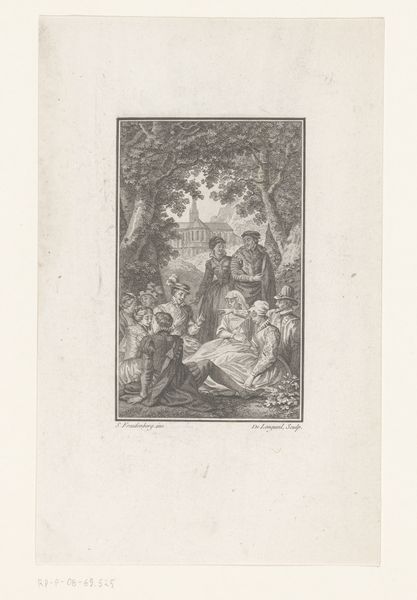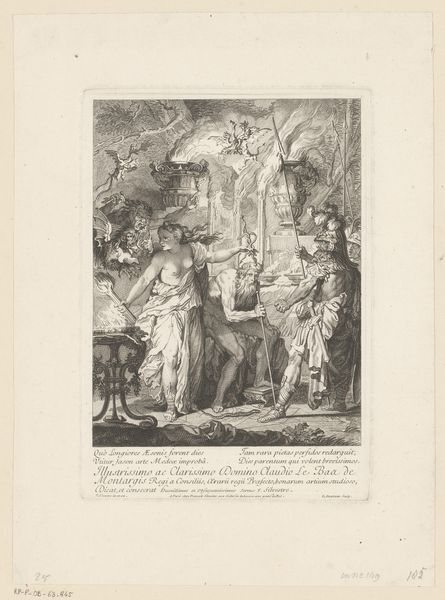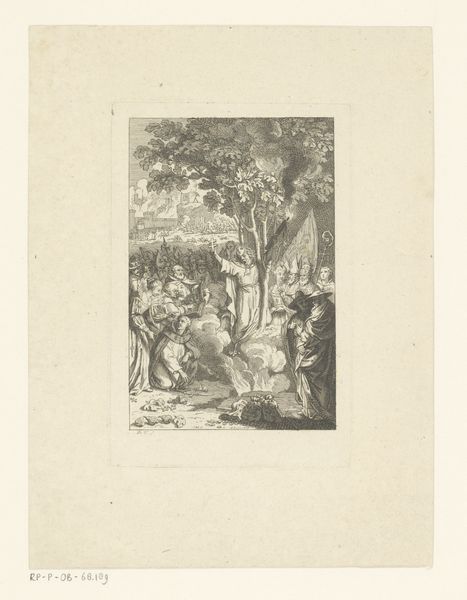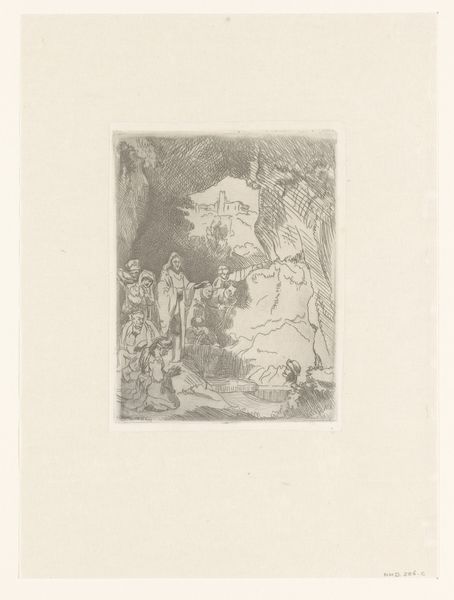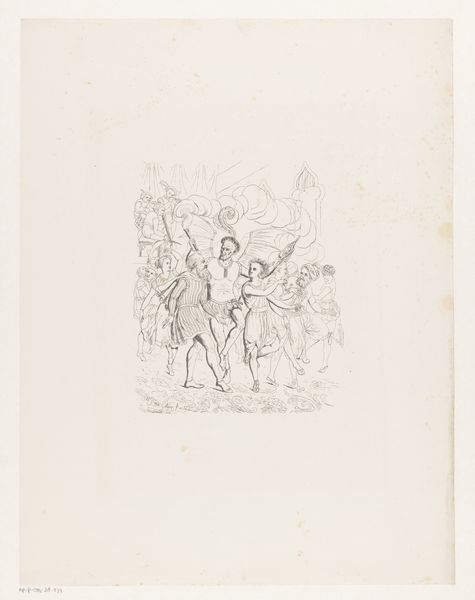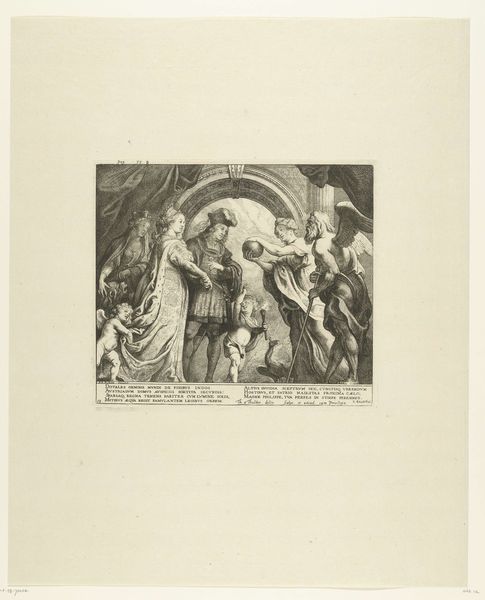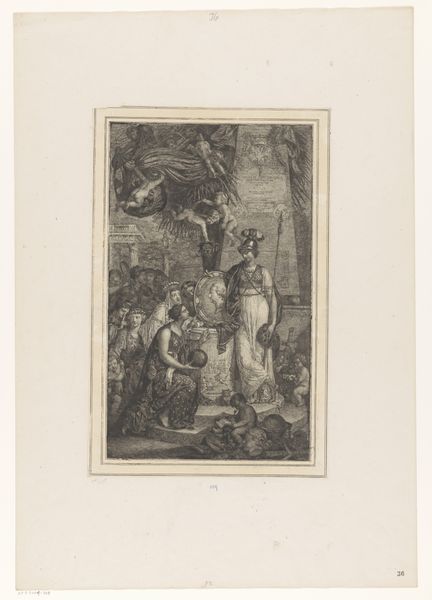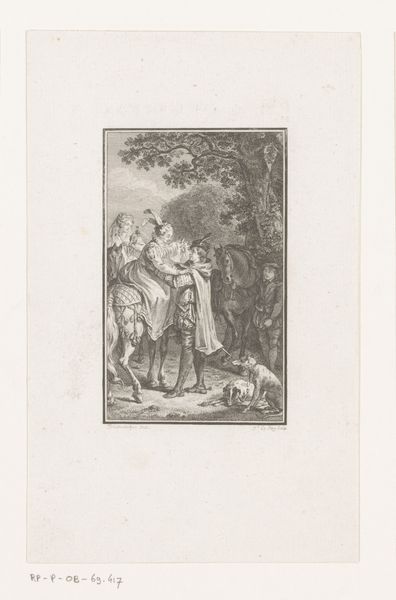
print, engraving
#
narrative-art
# print
#
landscape
#
figuration
#
romanticism
#
history-painting
#
engraving
Dimensions: plate: 21.6 x 16.8 cm (8 1/2 x 6 5/8 in.) sheet: 27.6 x 21 cm (10 7/8 x 8 1/4 in.)
Copyright: National Gallery of Art: CC0 1.0
Editor: This engraving from 1825, “Job and His Family Restored to Prosperity” by William Blake, strikes me as a triumphant, albeit unsettling, scene. The figures seem almost ethereal. What do you see in this work, especially considering its historical context? Curator: Blake was deeply invested in social justice and often used biblical narratives to critique power structures. The story of Job, a righteous man tested by immense suffering and then rewarded for his faith, is complex. Considering Blake’s radical politics, could this be less a celebration of divine justice and more an interrogation of earthly power dynamics? Editor: That’s an interesting point. I hadn’t considered a critical reading. It almost feels… subversive? Curator: Precisely! Notice the expressions on the figures, some appear joyous, but others seem contemplative, even burdened. Also, consider Blake’s fascination with visionary experience and his own struggles against societal constraints. He positions himself as a dissident artist standing against conventional artistic styles and religious orthodoxy. Could Job represent the righteous individual challenging established authority? Editor: So, the restoration to prosperity might not be a simple happy ending, but perhaps a call to a different kind of society, one founded on more equitable principles? Curator: Exactly. Think about it. How does the image challenge our own assumptions about faith, suffering, and societal rewards, particularly in the context of systemic inequalities? Editor: That really makes me reconsider the artwork. It’s no longer just a historical illustration but a potential challenge to contemporary power structures. Curator: And in viewing it through this lens, we gain insight into the power of art as a critical and transformative force. Editor: I now understand it can also be interpreted as a commentary on societal issues. Thank you!
Comments
No comments
Be the first to comment and join the conversation on the ultimate creative platform.
